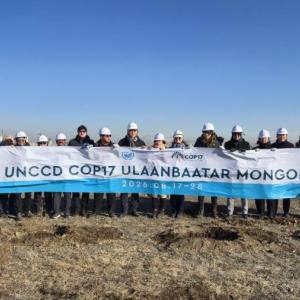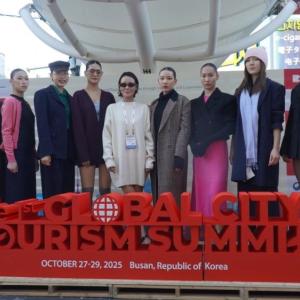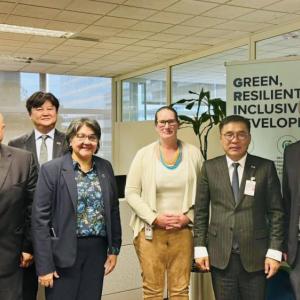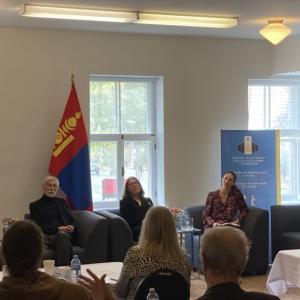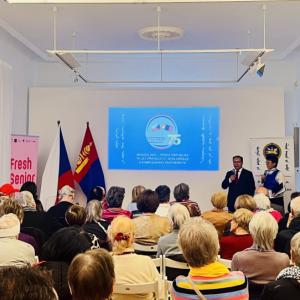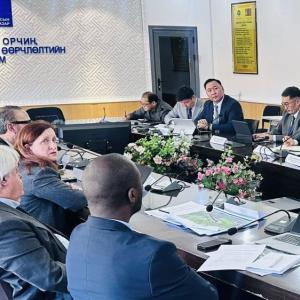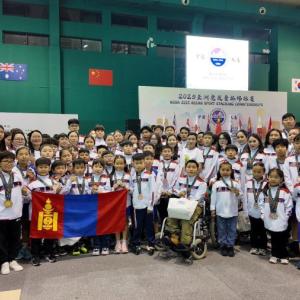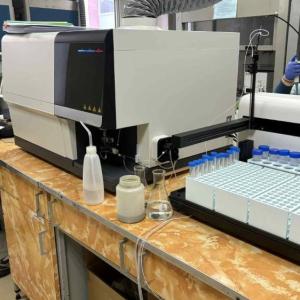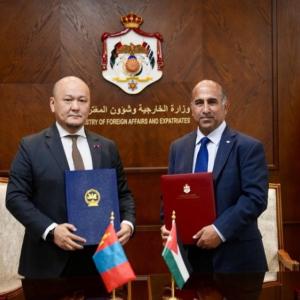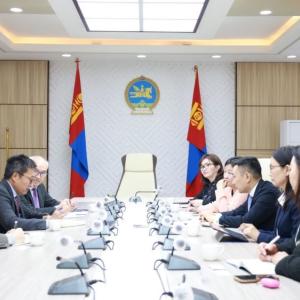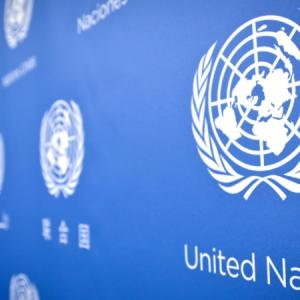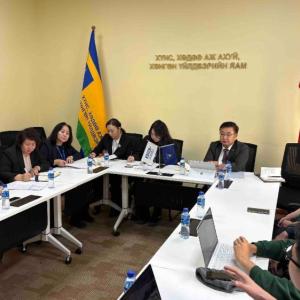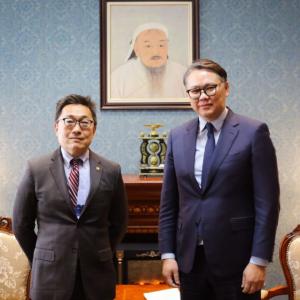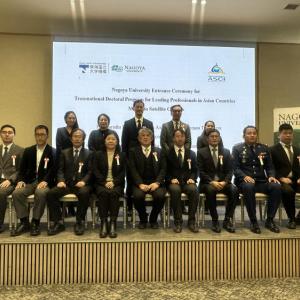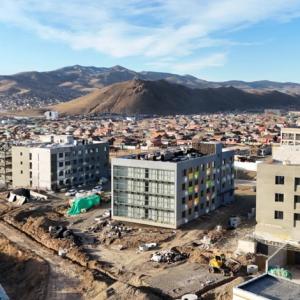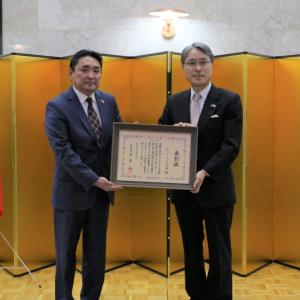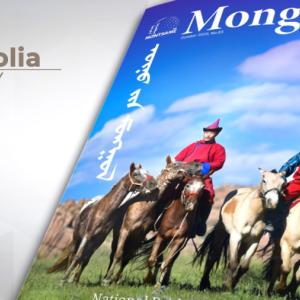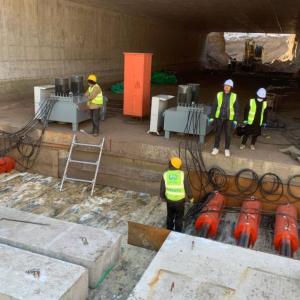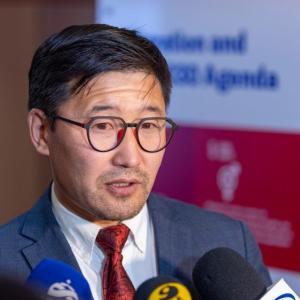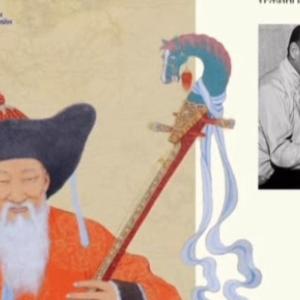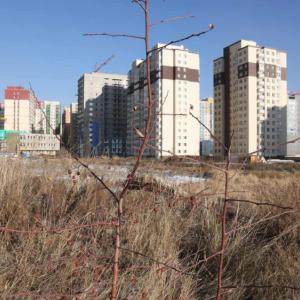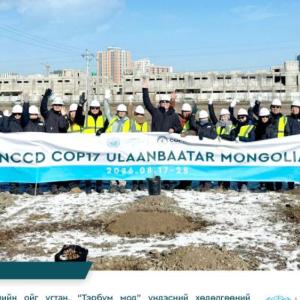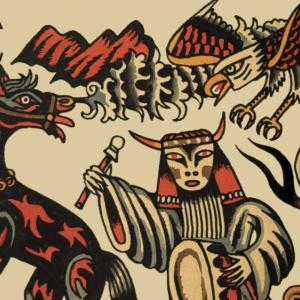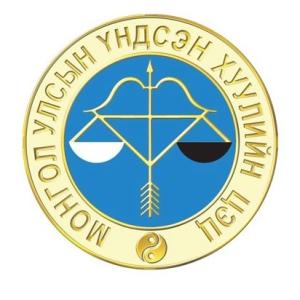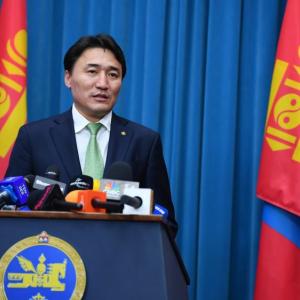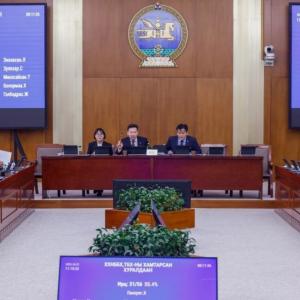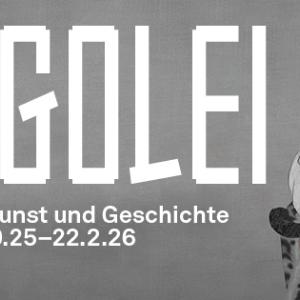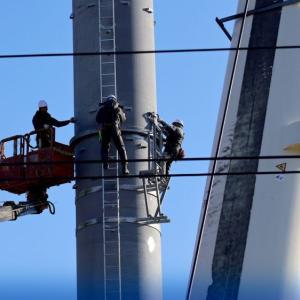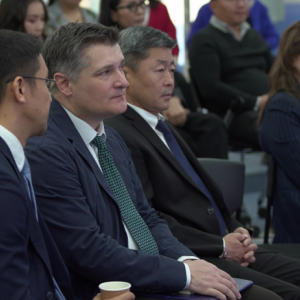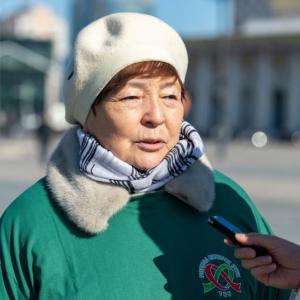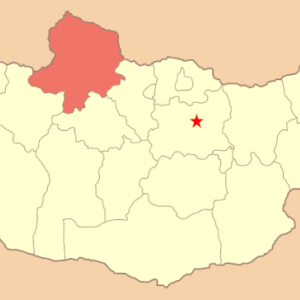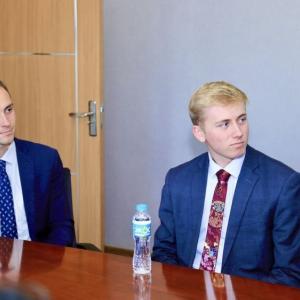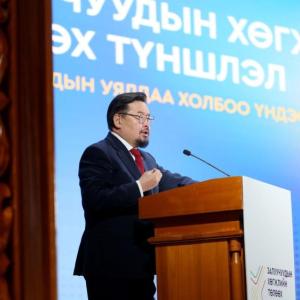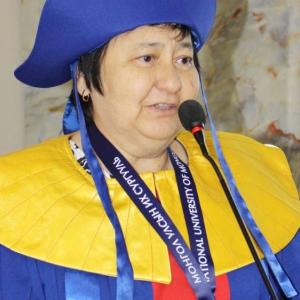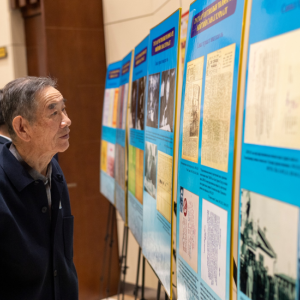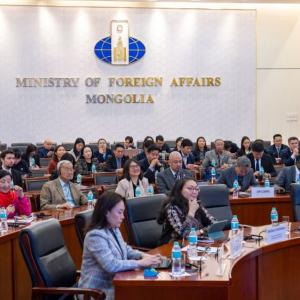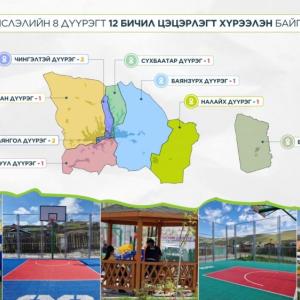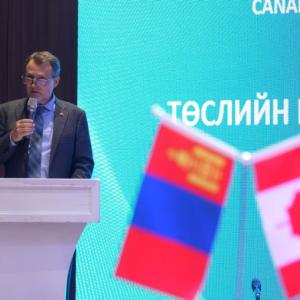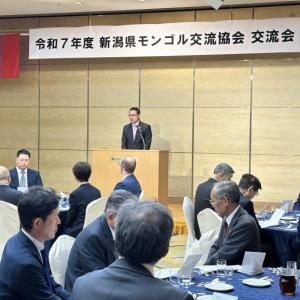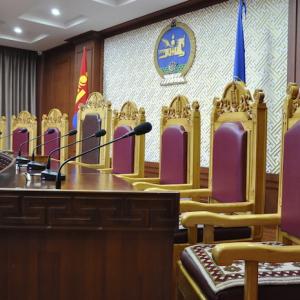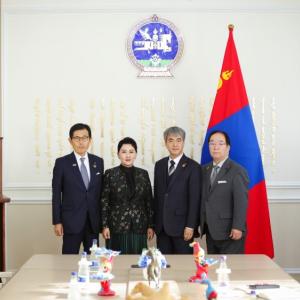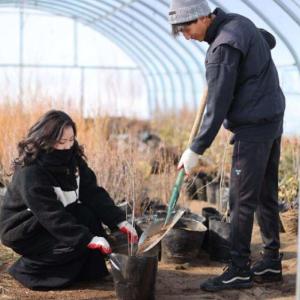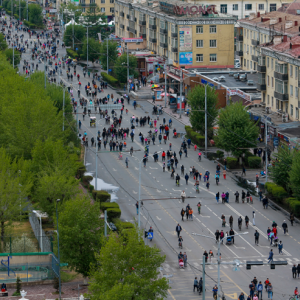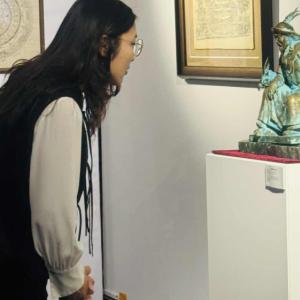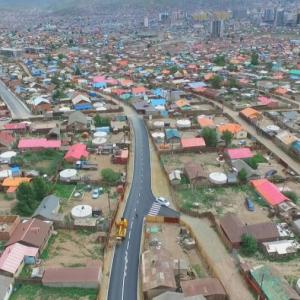Archaeologists locate enormous grave at Xiongnu burial site
The Mongol Messenger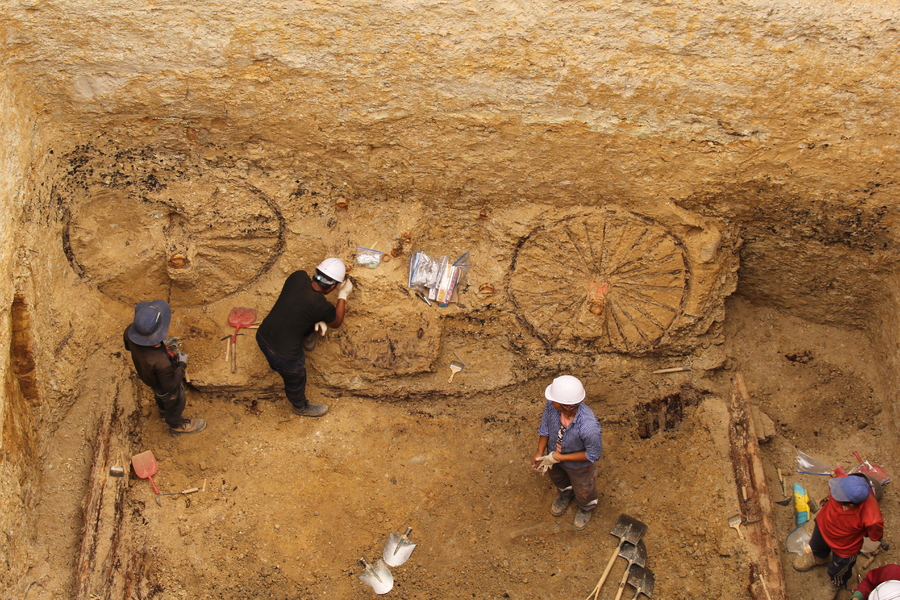
On February 1-2, Mongolian archaeologists reviewed their findings and achievements of 2017 at the annual academic conference ‘Mongolian Archaeology’, co-organized by the Institute of History and Archaeology of the Mongolian Academy of Sciences and the National University of Mongolia.
More than 60 presentations on archaeological research and excavation works conducted by about 200 archaeologists were delivered. The two-day conference wrapped-up after naming the best five presentations or archaeological works conducted in Mongolia in 2017, which were voted for by the participants.
More than 60 presentations on archaeological research and excavation works conducted by about 200 archaeologists were delivered. The two-day conference wrapped-up after naming the best five presentations or archaeological works conducted in Mongolia in 2017, which were voted for by the participants.
- Archaeological excavation of Xiongnu graves in Chikhertiin Zoo, Tuv Aimag – Mongolian - Korean joint project
- Archaeological research in Valley of Tamir River – Mongolian - French joint project
- Archaeological research in Airagiin Gozgor, Orkhon Aimag – Ts.Odbaatar, M.Bars, M.Nyambat, B.Amgalanbat
- Study on Preservation of Mural Painting in Shoroon Bumbagar site – O.Angaragsuren and Kouzuma Yousei
- Dornod Mongol Survey – Mongolian - American joint project
The winning research project was led by Eregzen Gelegdorj, Ph.D, Associate Professor of the Department of Xiongnu and Ancient History of the Institute of History and Archaeology, who sat with the Mongol Messenger to discuss the findings of the excavation of one of the most interesting Xiongnu burials in Mongolia.
Mongolian and Korean archaeologists have been conducting archaeological excavation and research at a site called Chikhertiin Zoo located in Bayantsagaan Soum in Tuv Aimag since 2016.
After a mining exploration license was granted to a Chinese company in the area, archaeologists of the Institute of History and Archaeology conducted a rescue field survey in 2013 to discover a burial site dating back to Xiongnu Empire (III-I century BCE), the first known state established by the ancestors of Mongolians. “The burial almost covered the entire area designated for the exploration license. It caught our attention because of its size, number of tombs and location, which is between the Gobi and steppe, so we started excavation on the site in 2016,” said Eregzen.
Mongolian and Korean archaeologists have been conducting archaeological excavation and research at a site called Chikhertiin Zoo located in Bayantsagaan Soum in Tuv Aimag since 2016.
After a mining exploration license was granted to a Chinese company in the area, archaeologists of the Institute of History and Archaeology conducted a rescue field survey in 2013 to discover a burial site dating back to Xiongnu Empire (III-I century BCE), the first known state established by the ancestors of Mongolians. “The burial almost covered the entire area designated for the exploration license. It caught our attention because of its size, number of tombs and location, which is between the Gobi and steppe, so we started excavation on the site in 2016,” said Eregzen.
Over 12 thousand Xiongnu graves found in Mongolia
Before delving into his exciting finds from Chikhertiin Zoo, I asked him about the widespread Xiongnu-era remains and burials found in Mongolia. He answers, “The Xiongnu Empire ruled large territory on the Central Asian land, which extends between Tian Shan Mountain to the west and the Three Provinces of Manchuria or the present Northeast China to the east, and between Baikal Lake to the north and the Great Wall to the south. On this vast land, numerous remains, burials, ruins and petroglyphic heritages are found. As for burial sites, there are more than 10 thousand. Especially in Mongolia, about 12 thousand Xiongnu graves have been discovered until now. The burial sites center in Mongolia. These tombs are scattered in 350 burial sites found within Mongolian territory. Within Mongolia, Xiongnu burials are mostly found within the Khangai and Khentii Mountain Ranges and the central region. Tombs belonging to aristocrats of the bloodline of Modu Chanyu are also mainly found in this area. Major Xiongnu burial sites include the famous Noyon Uul, Gol Mod, Gol Mod – II, Duurlig Nars, Takhiltiin Khotgor, Selbe and the newly discovered Khyalganat. Outside of Mongolia, there are over 2,000 graves in Buryatia, the Russian Federation.”

Having established that Mongolia is indeed the geographic center of Xiongnu-era remains and archaeological research, we entered the discussion of what has been found in Chikhertiin Zoo that makes it worthy of our attention. According to Eregzen, there are more than 300 graves in the Chikhertiin Zoo burial site. Before the team started excavation, a land survey was conducted, covering a territory with 5 km length and 2-3 km width. “We registered 287 graves initially, which isn’t a final number. We’ve found more tombs outside the surveyed area, which should increase the total number to more than 300. We are planning to update our registration.” Eregzen informs that Xiongnu-era graves are always found in groups as a burial site, with the number ranging from 300 or 100 to 30 or 10. According to the archaeologist, Chikhertiin Zoo burial site is more spacious than other burial sites.
When asked if all 300 graves will have to be excavated in order for the research to conclude, Eregzen says that won’t be necessary. In addition to the hope of enriching the existing knowledge on Xiongnu, the research aims to learn the time and progress of establishment of the site and its general arrangement and structure, and study the finds unearthed. “We will then compare our conclusion with similar research works to determine whether if there was a local cultural distinction or a common cultural feature,” Eregzen says. The Chikhertiin Zoo burial site has certainly revealed itself to be a unique Xiongnu heritage site among the existing ones.
Robbery common among Xiongnu graves
For the last two years, the Mongolian-Korean joint team excavated six tombs in total at the mass burial site. Last year, a team with more than 30 archaeologists, students and assisting staff executed excavation on four tombs - a grave with a 20-meter diameter and 12-meter depth, its two smaller satellite graves and another grave separate from the three. Eregzen recounted the excavation progress for us saying, “Excavation was a challenging process as the ground was solid and muddy, and the grave didn’t have an entrance, so we needed a bigger crew and a crane. Common features found in the Xiongnu grave were observed during the excavation. We found remains of a chariot eight meters deep, and one meter further down, the lid of the tomb was revealed. It appeared that two chariots were placed above the wooden tomb which we estimate to be about 1.5-meters tall. The two chariots were quite remarkable; in particular, they had four wheels. Archaeologists haven’t unearthed a four-wheel Xiongnu chariot from Mongolia until now. One of the chariots had a bronze accessory plated in gold, and the other metal decorations. The tomb lid bore evidence that the grave was robbed long ago, as a result of which we were able to discover very few objects. The remaining finds include the chariot accessories, a golden fan blade, gold-decorated and bronze objects. We couldn’t determine what the bronze object was, but now we can assume it may have been the base of an oil lamp cup, based on a presentation delivered at this conference. We also unearthed a stone roller and some digging equipment. Such objects were unearthed in Gol Mod site in Arkhangai Aimag before, and are usually found in Xiongnu graves. The smaller satellite graves were also robbed, and we unearthed what remained – bronze bridle finds, bone and bronze arrowheads and bone part of bow. Bronze arrowheads similar to this one were previously found in Chandmani site (Early Iron Age) in Uvs Aimag. The fourth grave was also raided, and the only remains we found were related to sacrificial ritual.”

When asked about robbery, which unfortunately and significantly limits the depth of information that could be gained from such an important archaeological site, Eregzen points out that majority of Xiongnu graves are indeed robbed. He explains, “I believe about a thousand graves have now been excavated in Mongolia and Central Asia, but there are hardly any graves found in their original state. Almost all of them have already been robbed and it is not just an issue of modern times.” According to the archaeologist, Xiongnu graves were mostly raided during ancient times by the states which ruled the Xiongnu territory after its collapse. “Grave robbery was common partially because of revenge rituals and the wealth of the graves. Xiongnu graves were very rich in gold and other valuables. Had these graves not been robbed, the amount of information archaeologists could unveil is unimaginable.”


Existing conceptions on Xiongnu burial culture challenged
As such, I sought to know what the few finds from the Chikhertiin Zoo graves represent in Xiongnu studies. Eregzen believes that the objects could challenge the existing understanding on burial culture of the Xiongnu state.
First of all, the graves of Chikhertiin Zoo are unusually big among Xiongnu burial sites located by archaeologists. “Basically, Xiongnu graves are classified under two categories in terms of the shape of the stone structure above the ground – square and round. Square graves have entrance, are big and believed to be of aristocrats. The round graves are usually smaller and believed to be of ordinary people. Round graves usually have a 6-10-meter diameter, but there are 15-meter ones too. The burial site of Chikhertiin Zoo has round graves with the average diameter of 15, and moreover 20 and 25. We also found an enormous round grave with a 50-meter diameter. Graves this big aren’t common in Mongolia.”
The joint team excavated a 20-meter grave last year which was the biggest round grave excavated in Mongolia to date. “The grave was huge on the ground and very deep, which is uncommon among the graves of ordinary people. Moreover, the unique four-wheel chariot is a rare find.”

Based on the structure and the shape of the bronze arrowhead, archaeologists presume that the grave might date back to III-II century BCE. “If our assumption is true, the few finds we unearthed will represent a relatively earlier timeline than the graves that have been studied in Mongolia, which is the importance of this research. Moreover, this research could possibly contradict the previous assumption that only ordinary citizens’ graves were round-shaped. Aristocrats’ graves could have been round-shaped as well. We can draw a preliminary conclusion that all Xiongnu graves were round-shaped at the beginning, and started to differ in shape respective of the social status of the deceased after the 1st century BCE.” The objects have been sent for chronological examination to several institutions.
Moreover, Doctor Eregzen stresses the significance of the 50-meter grave saying, “This round grave is the first 50-meter grave in Mongolia. It is considered to be big even compared to other aristocrat graves of Xiongnu. Unfortunately, it bears external signs of raiding. We found small pieces of volcanic rock above this grave, which are similar to the ones we found in 2016 during our excavation. The small volcanic rocks were plugged in around the wooden chamber. Therefore, we believe that the rocks surfaced as a result of raiding. This mass grave is surrounded by 8 smaller satellite graves.”
When asked if the team plans to excavate the 50-meter grave this summer, Eregzen said no. “This is the biggest round grave found in Mongolia from Xiongnu era. We should leave it to the future,” he said. The archaeologists are instead planning to summarize the outcome of their two-year field research at the Chikhertiin Zoo site and publish a book next year. The next steps in the research will be determined after the research report is ready.
Answering my concerns regarding the safety and preservation of the burial site, Eregzen said, “Since a number of cultural heritages have been discovered, mining activities are no long an option. Moreover, the site will have to be protected as an immovable heritage. We are helping local residents understand the significance of the Chikhertiin Zoo site. The Mongolian National Center of Cultural Heritage is in charge of preservation of cultural sites.”
Archaeological museum to be established
During the conference, S.Chuluun (Ph.D), Director of the Institute of History and Archaeology briefed the Mongol Messenger on the highlights of 2017 in Mongolian archaeology. In 2017, more than 40 expeditions in cooperation with national and international educational institutions, museums and researchers worked in the territories of 71 soums of 21 aimags. The Institute of History and Archaeology conducted rescue excavations on territories of 48 soums of 13 aimags to find more than 1,200 immovable archaeological remains.
“After a prolonged process, we’ve acquired a land permit from the Citizens’ Representative Khural of Tuv Aimag for a national archaeological museum. The museum is to be built along the highway leading to the New Ulaanbaatar International Airport,” Chuluun said. Chuluun envisions Mongolia’s opportunity to build a major museum of the nomad culture for the Eurasian region. “Building the museum near the new airport can not only contribute to the national economy, but also to the promotion of Mongolian archeology and heritage.”
Moreover, the Institute released a publication on the study of Noyon Mountain heritages kept in the State Hermitage Museum of Saint Petersburg, Russia. In cooperation with the Museum, the Institute will also organize an exhibition on the valuables of the descendants of Chinggis Khaan in 2019. The Institute cooperates with 36 organizations from 16 countries.
As for 2018, the Institute plans to hold several exhibitions in addition to the continuation of the ongoing research works. In April, an exhibition themed ‘Empire of the Steppe Nomads’ will be held in the Republic of Korea. An exhibition featuring the outcome of a five-year study on the 17th century Mongolian cities will be held in June. Moreover, a three-volume book on the tangible heritages kept in the Taiwanese National Palace Museum will be published in Mongolian, English and Chinese languages.
Kh.Aminaa
The interview was published on the Mongol Messenger's 8th issue.
The interview was published on the Mongol Messenger's 8th issue.
 Ulaanbaatar
Ulaanbaatar






